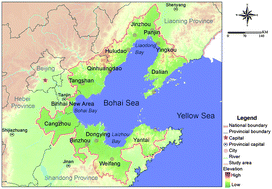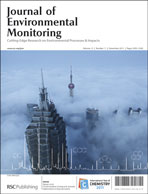Environmental carrying capacity is an essential metric for measuring regional sustainability. Although the term “carrying capacity” has been applied for over a century, the concept definition, quantitative methods and comprehensive evaluation remain arguable. This study analyzed the carrying capacity of four environmental elements, including water resources, air, surface water and offshore sea, and integrated them into a comprehensive index to represent overall regional profiles of resources and environment. The method was then applied to thirteen municipalities in the Bohai Sea Rim area, one of the most rapidly developing regions in transition China. The results show that the comprehensive environmental carrying capacity of the municipalities in the south sub-region were largest in 2007, while that of the west municipalities were lowest. The regional economic development exceeded the overall environmental carrying capacity by 36% and the west sub-region area deserves overwhelming attention for future industrial allocation.

You have access to this article
 Please wait while we load your content...
Something went wrong. Try again?
Please wait while we load your content...
Something went wrong. Try again?


 Please wait while we load your content...
Please wait while we load your content...